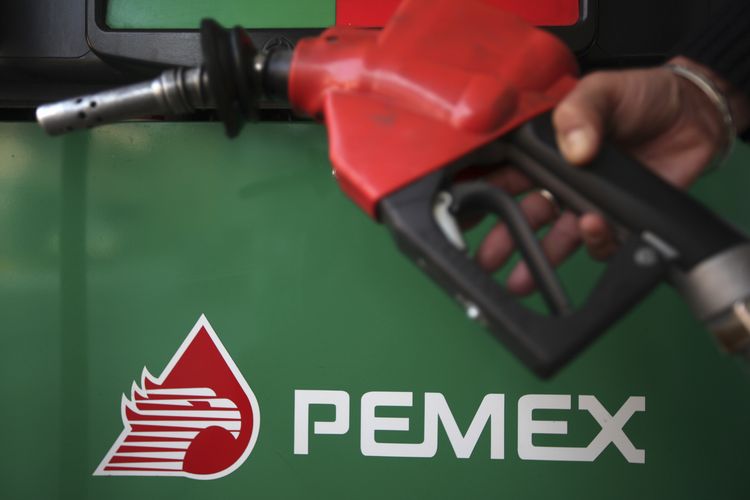Amid historic reforms to Mexico’s energy sector, oil giant Pemex has been more active than ever in the capital markets as it looks to diversify its financing strategy and prepare for a hike in US rates.
It has been, by any yardstick, a year of transition for Pemex. With sweeping reforms set to open up Mexico’s energy sector to foreign participation and break the monopoly it has held for 77 years, the state-owned oil company has restructured its business and diversified its funding sources to prepare for a very different operating environment.
The controversial energy reforms were approved by the Mexican government in December 2013, with the aim of modernising a sector that has been nationalised since Pemex was established in 1938. As the government auctions off valuable oil assets to international bidders, the country is braced for the influx of global energy giants eager to tap a market they had previously been locked out of.
That could be a daunting prospect for Pemex, a company that has enjoyed full state support without competition for its entire existence. But it is also brings opportunities to accelerate the diversification of a financing strategy that had previously focused fairly narrowly on US dollar-denominated debt.
“We are working to increase the financing tools we have, and will continue to be a very active debt issuer while also retaining a significant part of our operating income for financing. Our strategy is to enhance the diversity and efficiency of our programme,” said Rodolfo Campos, treasurer of Pemex.
Pemex has been particularly active so far this year, and by the end of the first quarter its total financing activities amounted to US$9.73bn, set against a net indebtedness target of US$15bn for the full year 2015. Highlights so far have included a €2.25bn bond issue with seven and 12-year maturities in April, and a three-tranche US$6bn issue in January with five, 10 and 30-year maturities.
Comfortable position
The decision to complete so much of its target issuance so early in the year has been based partly on the widespread expectation of a rise in US interest rates in the second half.
“We expect rates to be hiked in September rather than June, and although it has already been priced in to some extent, the markets will be very volatile towards the end of the year, even if the underlying message is positive,” said Campos.
“Having issued large amounts in dollars, euros and pesos in the first half, we are in a comfortable position ahead of that volatility. If we see a decent opportunity, we may issue more, but we are positioned to be more conservative in the second half, if necessitated by market conditions.”
Most of Pemex’s income is either denominated in or linked to US dollars, so it had typically issued in dollars in the past, but the company is gradually now tapping other markets, most notably the local peso market.
In November 2013, it set up a market-making programme to bolster secondary market liquidity in peso-denominated bonds. Current market-makers are BBVA Bancomer, Banamex, Scotiabank, Bank of America and HSBC.
As of March 31 2015, 75.4% of Pemex’s debt exposure was denominated in US dollars and 23.4% in Mexican pesos, whereas at the same time last year 80.2% of its exposure was denominated in US dollars and just 18.9% in pesos. As part of its risk management, Pemex swaps bond issues to achieve a target debt exposure, but the split in exposure highlights the diversification strategy it has been pursuing.
Alternative curves
“From a risk management perspective, it makes sense to have a significant portion of our debt denominated in dollars, but with the objective of diversifying the investor base, we are developing other curves. The market-making programme means that we have a group of banks committed to providing liquidity to potential investors in peso-denominated bonds,” said Campos.
Although the vast majority of its debt is still issued either in dollars or pesos, Pemex is focused on expanding further afield. Having returned to the eurozone in late 2013 after a four-year hiatus, it has remained active in that market, and is also considering the addition of a fourth curve. Possible outlets for issuance include the Samurai market in Japan, Canada’s Maple market and the sukuk market.
“The challenge is that this industry is dominated by long-term projects, so longer tenors are always preferable, but to develop a curve it is usually only possible to start with short-term issues. As long as we can tap the market frequently, with the equivalent of at least US$1bn, we would be willing to issue in small tenors at first and gradually increase them,” said Campos.
Enhancing the accessibility of its debt to foreign investors has also been a priority, and Pemex has worked with custodians and fiscal authorities to make its bonds eligible for European settlement utility Euroclear. In a landmark issue in January, Pemex raised Ps8bn (US$536m) from local investors and Ps9bn (US$603m) through the new Euroclearable Cebures channel.
“For the first time in our history, this was a transaction that attracted greater participation from foreign investors than local investors, which proves we have a positive story to tell and can further diversify our investor base as we look to new markets,” said Campos.
To see the digital version of this report, please click here
To purchase printed copies or a PDF of this report, please email gloria.balbastro@thomsonreuters.com

